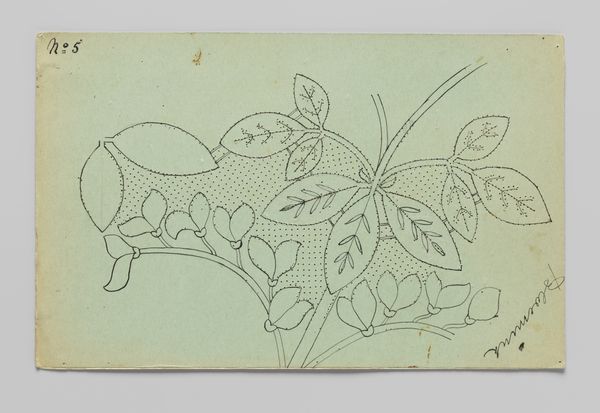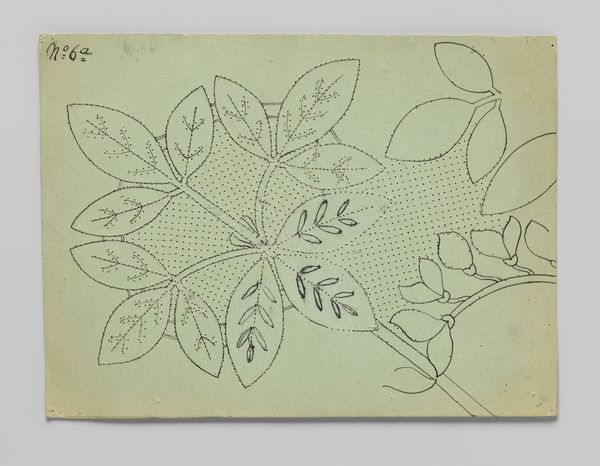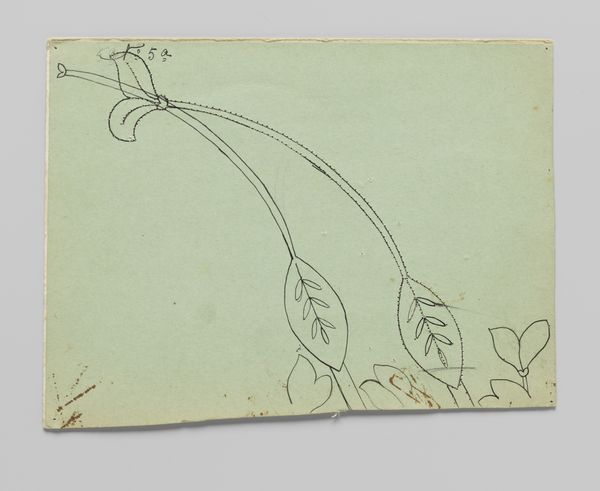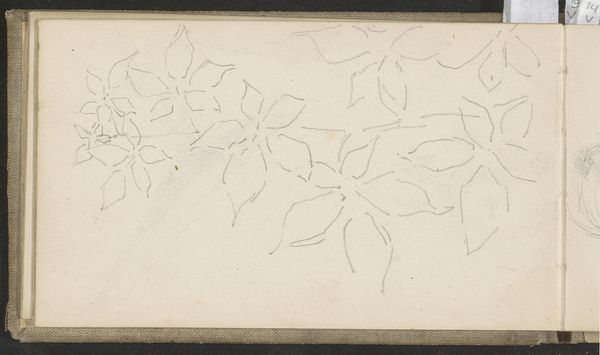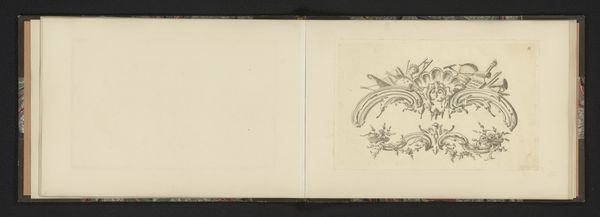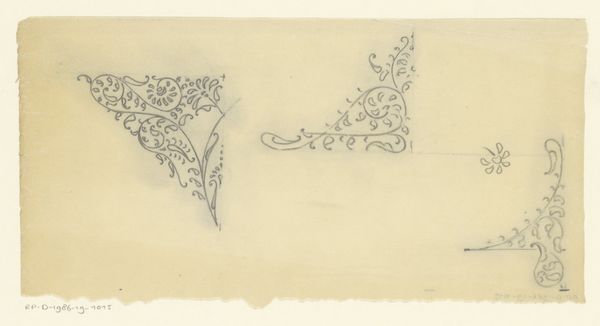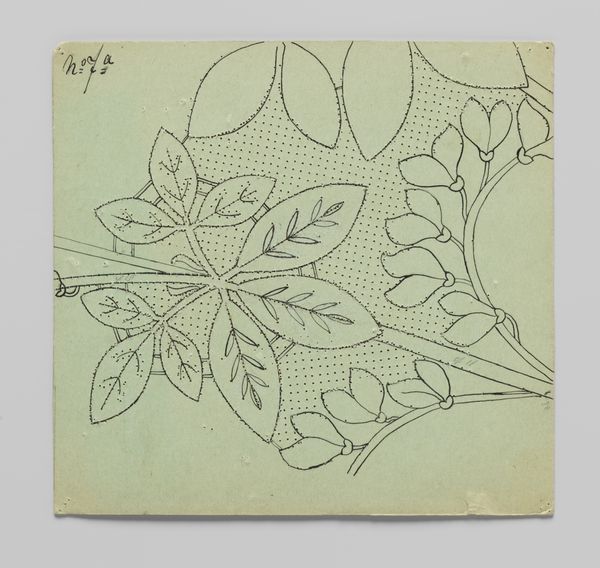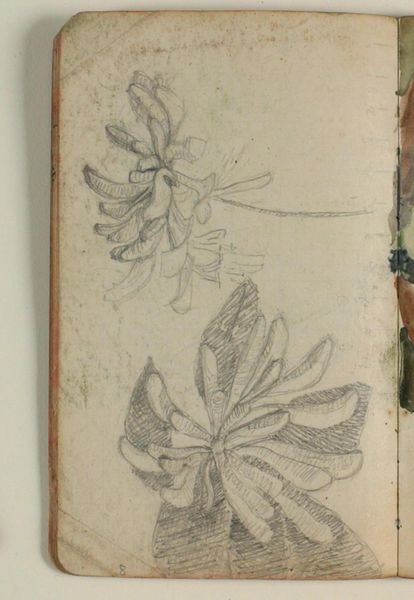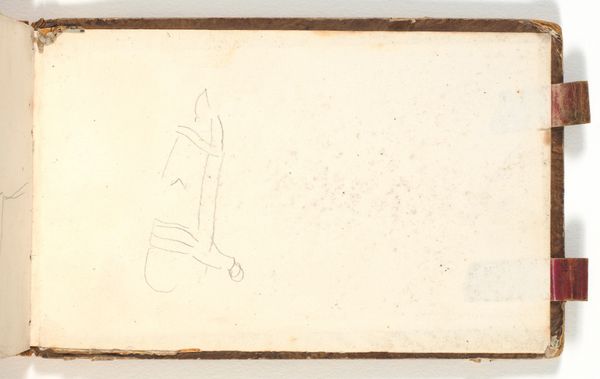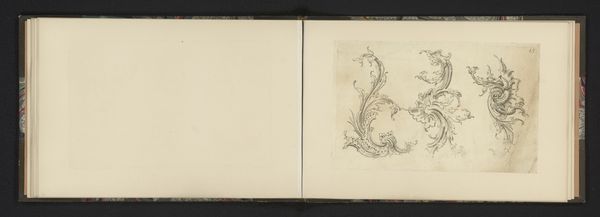
Kantpatroon voor een kleed van kloskant met goudenregentakken en -bloemen c. 1912
0:00
0:00
drawing, paper
#
drawing
#
organic
#
art-nouveau
#
paper
#
form
#
line
#
decorative-art
Dimensions: length 29 cm, width 23 cm
Copyright: Rijks Museum: Open Domain
Curator: Louise Wilhelmina van der Meulen-Nulle created this drawing circa 1912. It’s titled "Kantpatroon voor een kleed van kloskant met goudenregentakken en -bloemen," which translates to “Lace pattern for a dress of bobbin lace with golden shower branches and flowers." Editor: It's like a glimpse into a secret garden. There's a stillness here, but it also feels alive with potential. The blank page hints at all the work involved in transferring the design into physical lace. Curator: Precisely! The Art Nouveau influence is clear. Note the emphasis on flowing, organic lines forming idealized botanical shapes. It’s executed on paper, of course, a practical and widely available surface for pattern making at the time. Editor: You can almost feel the artist mapping out this delicate construction; it’s more than just decoration. It's a blueprint for turning threads into something tangible, durable, wearable. Did she see the design complete, I wonder? Curator: Good question. We understand bobbin lace to be incredibly labor-intensive, demanding specialized tools and techniques. This was, and is, a valuable craft that speaks to social structures around labor, gender, and the decorative arts. The consumption of lace signaled wealth and status. Editor: There is such subtle beauty here—the patient rendering, this capture of something so organic… But thinking of the work itself is equally inspiring. The focus required, the hours invested… Did it feel tedious at any point, or purely meditative? The finished piece carries echoes of both, I suspect. Curator: These sketches played a pivotal role in defining style. It reveals the meticulous planning inherent in producing luxury commodities, making Van der Meulen-Nulle part of the broader machinery involved in meeting social demand. Editor: It's interesting to consider the drawing not only as a practical step in production but as a valid work of art. I was stuck at the design stage; all of its future beauty stems from this delicate piece of paper. Thanks, Louise. Curator: Yes, absolutely. By analyzing materials and processes, it has hopefully challenged notions about value judgments, helping us to appreciate art’s connection to craft.
Comments
No comments
Be the first to comment and join the conversation on the ultimate creative platform.
